Conditional and Biconditional Statements:
We often use statements like given below:
(i) If the weather is inclement, then the boys will not go to play.
(ii) If x + 3 = 7, then x = 7 – 3.
(iii) If time permits, then I can go to the stadium.
(iv) If < a, b, c > is a Pythagorean triplet, then c2 = a2 + b2.
In each of the above composite statements, two simple statements are connected by if…then. Such compound statements using the connective ‘if…then’ are known as conditionals. The connective ‘if…then’ may be replaced by the connective ‘implies’. Thus, statement, (ii), given above may be written as ‘x + 3 = 7 implies x = 7 – 3’. For, obvious reasons compound statements connected by ‘if…then’ are sometimes called ‘implications’. The logical symbol for a conditional is ‘⇒’. Thus, the statement ‘if p, then q’ may be written as p ⇒ q, where p and q are two component statements (the two statements that make a conditional, are its components).
In the conditional ‘if p, then q’, p is the antecedent and q is the consequent. Thus, in the conditional ‘if the weather is inclement, then the boys will not go to play’, the statement ‘the weather is inclement’ is the antecedent, and ‘the boys will not go to play’ is the consequent.
The conditional p ⇒ q is false only when the first part p is true and the second part q is false. The truth table for the conditional p ⇒ q is shown below.
| p | q | p ⇒ q |
|---|---|---|
| T | T | T |
| T | F | F |
| F | T | T |
| F | F | T |
The converse of a given conditional is a new conditional formed by the interchange of the antecedent and the consequent of the given conditional. Thus, the converse of the conditional p ⇒ q is q ⇒ p.
To construct the truth table for the converse of a conditional, we are to remember that in this case the antecedent has been changed to the consequent and vice versa and that a conditional is false only when the antecedent is true and the consequent is false.
The truth table for q ⇒ p (i.e. the converse of the conditional p ⇒ q) is shown below. It is clear from the table that the converse of a true conditional is true when both the antecedent and the consequent of the given conditional are true and also when both the antecedent and consequent are false.
| p | q | p ⇒ q | q ⇒ p |
|---|---|---|---|
| T | T | T | T |
| T | F | F | T |
| F | T | T | F |
| F | F | T | T |
The conditional ‘If 2 is a factor of 6, then 6 is an even number’ is the true converse of the true conditional, ‘If 6 is an even number, then 2 is a factor of 6’.
The inverse of a given conditional is a new conditional having the antecedent as the negation of the original antecedent and the consequent also as the negation of the original consequent.
Let us consider the conditional ‘If it rains, then Rita will not go to the club’. By definition, the inverse of the given conditional will have its antecedent and consequent as the negation of those of the original conditional. Thus, the inverse of the given conditional is ‘If it does not rain, then Rita will go to the club’. The symbolic form of the inverse of the conditional, p ⇒ q, is ~p ⇒ ~q. The truth table of the inverse is shown below. It is to be noted in this case that the inverse of a conditional is not always true when the original conditional is true.
| p | q | ~p | ~q | p ⇒ q | ~p ⇒ ~q |
|---|---|---|---|---|---|
| T | T | F | F | T | T |
| T | F | F | T | F | T |
| F | T | T | F | T | F |
| F | F | T | T | T | T |
A contrapositive of a given conditional is a new conditional whose antecedent and consequent are respectively the negation of the consequent and antecedent of the original conditional. In symbolic notation, the contrapositive of the conditional p ⇒ q is ~p ⇒ ~q (‘not q implies not p’ or ‘if not q then not p’). The contrapositive of the conditional ‘If it rains, then Rita will not go to the club’ is ‘If Rita will go to the club, then it does not rain’. It is clear that the inverse of a conditional is the contrapositive of the converse of the conditional i.e. p ⇒ q is the same as ~p ⇒ ~q. The truth table for the contrapositive is shown below.
| p | q | ~p | ~q | ~p ⇒ ~q | p ⇒ q |
|---|---|---|---|---|---|
| T | T | F | F | T | T |
| T | F | F | T | F | F |
| F | T | T | F | T | T |
| F | F | T | T | T | T |
We see that a conditional may be true but its converse may or may not be true. If a conditional p ⇒ q and its converse q ⇒ p are both true, then the sentences p and q are said to be logically equivalent. Thus, the sentence ‘Neha can go the club if and only if the weather is fair’ indicates two statements namely,
(i) If the weather is fair, then Neha can go to the club (p ⇒ q or if p then q).
(ii) If Neha can go to the club then the weather is fair (q ⇒ p or if q then p).
The two statements together form a biconditional.
If p and q represent any two statements, then the biconditional p ⟺ q means (p ⇒ q) ∧ (q ⇒ p). Thus, to prove the equivalence of two statements p and q, it is necessary to establish the falsity or truth of both the conditionals p ⇒ q and its converse q ⇒ p. The truth table of the biconditional p ⟺ q is shown below.
| p | q | p ⇒ q | q ⇒ p | p ⇒ q ∧ q ⇒ p | p ⟺ q |
|---|---|---|---|---|---|
| T | T | T | T | T | T |
| T | F | F | T | F | F |
| F | T | T | F | F | F |
| F | F | T | T | T | T |
It is clear from the table that p ⟺ q is true only when both of the conditionals p ⇒ q and q ⇒ p are either true or false.
Let us consider the simple statement of implication ‘If Julie comes, then Emma will go to the function’ and try to analyze the various forms.
| Conditional | Sentence | Logical Form | Format in Language |
|---|---|---|---|
| Statement | If Julie comes, then Emma will go to the function. | p ⇒ q | If p, then q |
| Converse | If Emma will go to the function, then Julie comes. | q ⇒ p | If q, then p |
| Inverse | If Julie does not come, then Emma will not go to the function. | ~p ⇒ ~q | If not p, then not q |
| Contrapositive | If Emma will not go to the function, then Julie does not come. | ~q ⇒ ~p | If not q, then not p |
Let us now consider the following sentences:
(i) If the weather is fair, Neha can go to the club.
(ii) Neha can go to the club, if the weather is fair.
(iii) If the weather is not fair, then Neha cannot go to the club.
(iv) If Neha can go to the club, then the weather is fair.
(v) Neha can go to the club if and only if the weather is fair.
Here, the statements (i) and (ii) bear the same meaning; they differ in style only, not in logical form (the meaning remains the same, whether the if part comes at the beginning of the sentence or not). Statement (iii) is the inverse of statement (i) and statement (iv) is the converse of statement (i).
Statement (v) is, however, different from the other statements. It bears an extra weightage compared to the other forms. In fact, it carries the weightage of both the statements given by (i) and (iii).
The equivalence of two statements p and q may be expressed in various ways, namely ‘p implies q and conversely’, ‘If p, then q and conversely’, ‘p if and only if q’, ‘q if and only if p’, ‘p is necessary and sufficient condition for q’, ‘q is necessary and sufficient condition for p’, etc. Sometimes the phrase ‘if and only if’ is written in a short form as ‘iff’.
Example 1: Write down the following in symbolic form.
(i) Converse of the inverse of p ⇒ q
Solution-
| The inverse of p ⇒ q is ~ p ⇒ ~ q. The converse of ~ p ⇒ ~ q is ~ q ⇒ ~ p. |
(ii) Inverse of the converse of p ⇒ q
Solution-
| The converse of p ⇒ q is q ⇒ p. The inverse of q ⇒ p is ~ q ⇒ ~ p. |
Example 2: Write down the converse, inverse, and contrapositive of each of the following statements:
(i) If ABC is a triangle, the AB + BC > AC.
Solution-
| p : ABC is a triangle q : AB + BC > AC ∴ statement in symbolic form is p ⇒ q (a) The Converse of p ⇒ q is q ⇒ p i.e. if AB + BC > AC then ABC is a triangle. (b) The Inverse of p ⇒ q is ~ p ⇒ ~ q i.e. if ABC is not a triangle then (c) The Contrapositive of p ⇒ q is ~ q ⇒ ~ p i.e. if |
(ii) If 2 + 2 = 4 then Sahil goes to Egypt.
Solution-
| p : 2 + 2 = 4 q : Sahil goes to Egypt ∴ statement in symbolic form is p ⇒ q (a) The Converse of p ⇒ q is q ⇒ p i.e. if Sahil goes to Egypt then 2 + 2 = 4. (b) The Inverse of p ⇒ q is ~ p ⇒ ~ q i.e. if 2 + 2 ≠ 4 then Sahil does not goes to Egypt. (c) The Contrapositive of p ⇒ q is ~ q ⇒ ~ p i.e. If Sahil does not go to Egypt then 2 + 2 ≠ 4. |

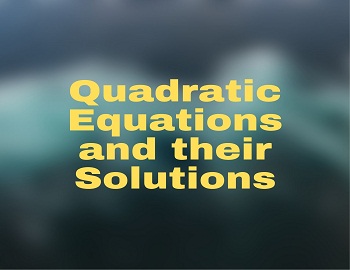


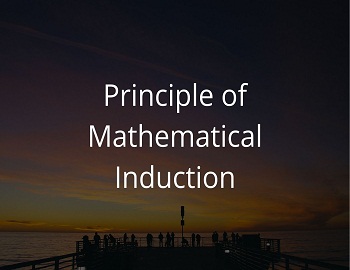
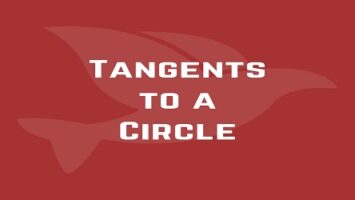
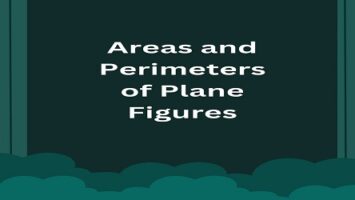
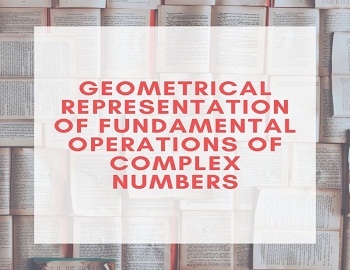
Comments (No)